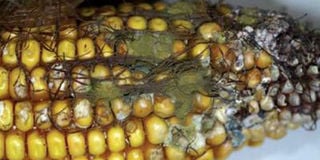School stores breeding places for aflatoxins – experts

Aflatoxins are a family of toxins produced by certain fungi. PHOTO/FILE.
What you need to know:
- “The foodstuffs schools are buying for consumption are not only being tested but they are also being kept away in inappropriate storage facilities that harbour conditions that are contributing towards the growth of these ” -Alex Paul Wacoo, Makerere University lecturer
Experts have said school storage facilities contribute to the increasing consumption of foods with aflatoxins.
They explain that failure to implement robust policies and conduct enough sensitisation will make learners suffer devastating health effects in the short and long term.
“The issue of aflatoxins is a big one in schools,” Mr Alex Paul Wacoo, a lecturer from the Department of Medical Biochemistry in College of Health Sciences at Makerere University, said.
He added: “The foodstuffs schools are buying for consumption are not only being tested but they are also being kept away in inappropriate storage facilities that harbour conditions that are contributing towards the growth of these toxins.”
Aflatoxins are fungal toxins that contaminate particular agricultural foods such as beans, dried cassava, maize and groundnuts.
The lecturer and his other colleagues from Makerere University made the remarks yesterday in Parliament while meeting MPs on the committees of Health and Agriculture.
Mr Abel Atukwase, a senior lecturer at the College of Agricultural and Environmental Sciences, Makerere University, said the aflatoxins flourish in different conditions, with some preferring moist places and others dry environments, which usually dominate storage facilities where agricultural produce is often kept.
Mr Atukwase further explained that there are different ways to tell if fungal toxins have engulfed foods.
“Some of you who live in rural areas may have noticed at one point something strange growing in your maize, something bearing a blue, purple, white or green color. They are fungus growing on dry food,” he said.
The lecturers proposed that the country sets up more policies to deal with aflatoxins as well as close monitoring and enforcement in schools to ensure that learners eat foods that are not contaminated.
The deputy chairperson of the Health committee, Mr Samuel Acuti Opio (Kole North), who presided over the meeting, joked that it every food seems harmful nowadays and so, “what is still left there to eat.”
Mr Joseph Ruyonga (Hoima West Division) who has a medical background, said it is no wonder that most patients go to hospitals with abdominal discomforts.
“We end up giving them so many drugs and testing for other ailments yet the problem could be these toxins, which people do not even know about,” Mr Ruyonga said, adding, “This is a very serious problem. We have so many cancers in communities but sometimes we do not know the cause.”
Mr Nicholas Kamara (Kabale Municipality) inquired whether they had conducted any studies linking aflatoxins to cancer.
Mr Wacoo responded that in 2020, his team embarked on a study titled “Probiotic approach for prevention of aflatoxin associated liver cancer” at Mulago Cancer Institute and Kiruddu hospital.
He said they picked blood and urine samples from patients who had liver cancer and those without the disease.
“We were able to get a strong relationship between consuming food contaminated with aflatoxin and liver cancer,” Mr Wacoo said.
The concerns from the experts come at a time when the Uganda National Bureau of Standards (Unbs) said guarding against aflatoxin exposure will take a concentrated effort.
The legislators will today meet a team from the Health ministry and Uganda Cancer Institute to address the health risks caused by aflatoxins.




